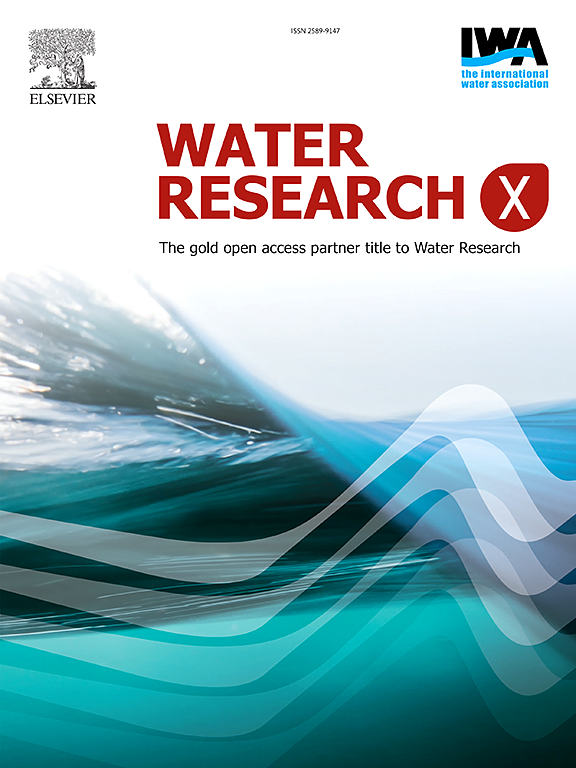Fungal pretreatment as a promising approach for simultaneous recovery of phosphorus and carbon resource from garden waste: Performance and mechanism
IF 8.2
2区 环境科学与生态学
Q1 ENGINEERING, ENVIRONMENTAL
引用次数: 0
Abstract
Garden waste (GW), which is rich in organic matter and nutrients such as nitrogen (N) and phosphorus (P), has not been fully utilized for resource recovery. This study investigates a novel approach to recover both P and carbon source from GW by fungal pretreatment. Four types of GW—Zoysia matrella (L.) Merr (ZMM), Lolium perenne L (LPL), Platanus × acerifolia (Aiton) Willd (PAW), and Cinnamomum camphora (L.) Presl (CCP)—were subjected to alkaline, thermal, and fungal pretreatments. Results showed that fungal pretreatment was more effective than alkaline and thermal methods, especially for turfgrass GW. After 7 days of fungal pretreatment, the orthophosphate (PO4-P) concentration in the LPL supernatant was 2.15 times that of the control. Enzyme activity and metagenomic data revealed higher abundances of lignin degrading enzymes in turfgrass GW, with laccase being the dominant enzyme. Fungi convert organic phosphorus into PO4-P by secreting 3-phytase. Ammonium was also produced during fungal pretreatment, resulting in a weakly alkaline supernatant that promoted the precipitation of P as struvite. Consequently, a 43.51 % recovery of P from LPL as struvite with 91.3 % purity was achieved. The residual leachate served as a carbon source, achieving 78.67 % nitrate removal and 76.48 % total nitrogen removal. This study proposes a sustainable strategy for simultaneous P and carbon recovery from GW.

真菌预处理作为园林废弃物同时回收磷碳资源的一种有前景的方法:性能与机理
园林废弃物中含有丰富的有机质和氮、磷等营养物质,但尚未得到充分的资源化利用。本研究探讨了一种利用真菌预处理方法同时回收GW中磷和碳源的新方法。四种gw -结缕草(L.)山楂(ZMM)、多年生Lolium perenne L (LPL)、Platanus x acerifolia (Aiton)野生(PAW)、樟(Cinnamomum camphora)Presl (CCP) -分别进行碱性、热和真菌预处理。结果表明,真菌预处理的效果优于碱法和热法,尤其对草坪草GW效果更好。真菌预处理7 d后,LPL上清液中正磷酸盐(PO4-P)浓度为对照的2.15倍。酶活性和宏基因组数据显示,草坪草GW中木质素降解酶丰度较高,其中漆酶为优势酶。真菌通过分泌3-植酸酶将有机磷转化为PO4-P。在真菌预处理过程中还会产生铵,产生弱碱性上清液,促进P以鸟粪石的形式析出。结果表明,LPL中磷以鸟粪石的形式回收率为43.51%,纯度为91.3%。剩余渗滤液作为碳源,硝酸盐去除率达到78.67%,总氮去除率达到76.48%。本研究提出了一种同时从GW中回收P和碳的可持续策略。
本文章由计算机程序翻译,如有差异,请以英文原文为准。
求助全文
约1分钟内获得全文
求助全文
来源期刊

Water Research X
Environmental Science-Water Science and Technology
CiteScore
12.30
自引率
1.30%
发文量
19
期刊介绍:
Water Research X is a sister journal of Water Research, which follows a Gold Open Access model. It focuses on publishing concise, letter-style research papers, visionary perspectives and editorials, as well as mini-reviews on emerging topics. The Journal invites contributions from researchers worldwide on various aspects of the science and technology related to the human impact on the water cycle, water quality, and its global management.
 求助内容:
求助内容: 应助结果提醒方式:
应助结果提醒方式:


